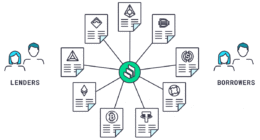In the last article, we saw a simple introduction to different types of blockchain technology. In this and upcoming guides, we will see each type in detail. For now, let’s take a look at public blockchain, its advantages, and its disadvantages.
Listen to the full article on audio
A public blockchain can be defined as a type of blockchain that is a permissionless distributed ledger technology where anyone can join and do transactions. Anyone can access the public blockchain if they have an internet connection as it is a non-restrictive version where each peer has a copy of the ledger.
Bitcoin is the earliest public blockchain that was released to the public blockchain. It sanctioned anyone connected to the internet to do transactions in a decentralized way.
Consensus methods such as Proof-of-Work(PoW), Proof-of-Stake(PoS), and so on are used to validate transactions. The engaging nodes need to do the heavy-lifting, including validating transactions to make the public blockchain work. Public blockchain will become unproductive if it doesn’t have the required peers participating in resolving transactions.
What Are the Advantages?
- Anybody can participate in the public blockchain as it is open to everyone.
- It brings trust among the whole community of users.
- There are no particular rules for the public blockchain regarding network server usage.
- Public blockchains are also secure depending on the number of participating nodes
- It brings complete transparency.
What Are the Disadvantages?
Transaction speed is trouble for the public blockchain. It can take a few minutes to hours before a transaction is completed. Let’s talk about bitcoin, it can only manage seven transactions per second whereas VISA manages to have 24,000 transactions per second. There is a huge difference between the numbers as it takes time to solve the mathematical problems and then complete the transaction.
Scalability is another problem with a public blockchain. The more nodes join, the slower the network becomes. However, this issue can be solved. For instance, Bitcoin is working on lighting the network, which takes transactions off-chain to make the main bitcoin network faster and more scalable.
What Are the Use Cases?
There are multiple use-cases of the public blockchain such as various government agencies, including voting applications and personal identification security. To get a better idea, let’s list some of them below.
- Voting: Governments can use a public blockchain for voting purposes for transparency and trust.
- Money transfer use cases: cryptocurrency transfer apps are exploding in popularity right now. It gained fame in finance for the money and time it can save.









-260x140.png)